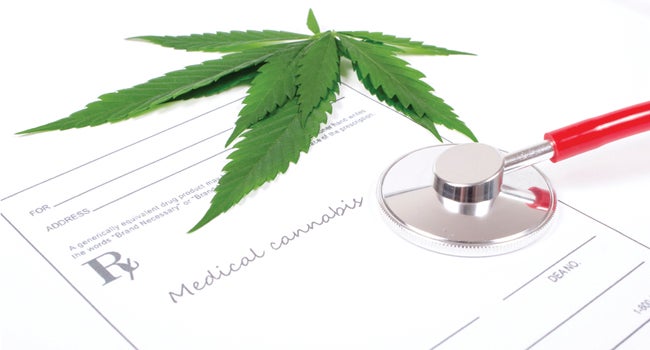CLOSER LOOK: Physician explains how cannabis affects the body
Published 11:39 am Wednesday, July 5, 2017
Dr. Christopher Prince has seen a lot in his 33 years as a licensed medical practitioner in Michigan. But one thing he has never seen is a marijuana overdose.
“In 33 years of practice, I’ve never seen anyone come in with a pure problem from a marijuana overdose,” he said. “I’ve worked in the ER enough, I’ve seen [more] people who need liver transplants from Tylenol overdose.”
Prince, of Stevensville, used to work as an emergency room doctor at Lakeland in St. Joseph, and he currently has a practice in Sister Lakes and is a traveling emergency doctor for rural communities in the western U.S. He said that, despite public opinion, many over-the-counter medications are far more dangerous as pain killers than medical marijuana.
“The lethal doses of marijuana are so astronomically high that a human couldn’t consume that much in a single sitting,” he said. “Tylenol and aspirin, in my opinion, are two of the most lethal painkillers out there, because you can self-medicate, and there’s no prescription required. They work well, but you start dealing with the abuse potential.”
Moreover, Prince said that physicians are at least partly culpable for what he sees as misconceptions about medical marijuana and the opioid abuse epidemic crippling the nation.
“We as physicians have found that people that are getting addicted [to painkillers] have been [doing so] because of our own treatment plans,” he said. “It isn’t because we [as physicians] don’t know what we’re doing, it’s because of how we’ve been pushed to treat pain. When you start comparing [current pain treatment] to marijuana, a lot of these other things are far more addictive.”
How it works
Once ingested, cannabis is broken down and results in the release of cannabinoids into the body, according to Prince.
The human body has an endocannabinoid system, which helps regulated memory functions, appetite, energy balance and metabolism, stress responses, immune functions, female reproduction, the autonomic nervous system, analgesia, thermoregulation and sleep.
Prince explained that the endocannabinoid system comes with two types of receptors: Cannabinoid receptor type 1 (CB-1) and cannabinoid receptor type 2 (CB-2).
“CB-1 [receptors are] primarily in the brain, and CB-2 [receptors are] in lymphatic tissue,” he said. “The active cannabinoids will fit in those receptors and do various things.”
Cannabinoids in a person’s body become attracted to the two receptors and then has an effect.
“In the actual activity of the endocannabinoids, it works on the presynaptic portions of the nerve. [When cannabinoids attach to a receptor] the presynaptic region will release a compound that will attach to the postsynaptic receptor that will give you the effect you’re looking for. It tends to prevent release of the neurotransmitters.”
Unlike opioids, which block the transmission of pain, cannabis instead decreases the amount of pain transmission, which inhibits its ability to send a pain message to the brain. With a current lack of research, the efficacy of the pain inhibition is word of mouth at best, which Prince admits.
“[Medical marijuana] has been working well for several of the patients [my practice has] been seeing,” he said. “How much of that is marijuana or other medications [they are taking] is anyone’s guess.”
The method of consumption of cannabis is also important to the effect it will have, according to Prince.
“By smoking [marijuana], the effects take place immediately and may last up to two to four hours,” he said. “With edibles, it may take up to two hours before it’s fully absorbed, and it may last four to eight hours.”
From his experience with marijuana in the medical field, Prince does not believe that it is the gateway drug that it is made out to be. He believes that it is a person’s personality and tendency toward addiction that drives them toward harder drug use.
“If you think about it, the majority of the people that use harder drugs started out using marijuana,” he said. “Because it was their first drug, people assume that’s what led to them wanting a bigger high. If you start thinking about addiction, start thinking about alcohol and tobacco, because they’re both more addictive than cannabis.”







